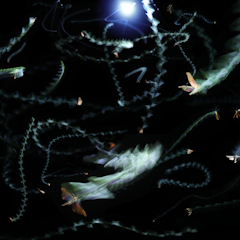
Articles on Entomology
Displaying 1 - 20 of 81 articles

99.96% of bee species do not die after stinging. So why does everyone think they do?

Only male crickets have wing structures that produce sound, but females are very good at following the signal.

Sometimes it seems the night is just buzzing with insects. But are there really more insects out at night? We analysed all the evidence on insect activity across the day–night cycle to find out.

The last time that these two groups of cicadas emerged from underground together, Thomas Jefferson was president.

This is one of the first fossil rove beetles ever discovered on the continent and in the southern hemisphere more broadly.

Female mosquitoes don’t want to lay their eggs alone, but they don’t want sites that are too crowded either. Understanding what guides their choice could inform new control strategies.

The native red admiral is less common than it used to be, but we can all help threatened bug species by ensuring they have the right habitats to thrive in.

A new study shows how artificial light at night scrambles insects’ normal flight patterns, pulling them off course into orbit around the light.

Most stings can be safely handled at home. But in rare cases, you can get a serious allergic reaction, which needs urgent medical attention.

Flies often beat out competitors for food because of their specialized sensing organs called antennae.

New research on what attracts blood-feasting flies to blue objects could help minimise the impacts of those insects on people and animals.

Scientists are learning amazing things about bees’ sensory perception and mental capabilities.

Two food scientists, an entomologist, an anthropologist, a veterinarian and a historian walk into a bar (of chocolate) and tell bitter and sweet stories of this favorite treat.

New research from China shows how the loss of insects is destabilising food webs.

Many gardeners worry these large larvae might damage plants. But before you squish them, read this.

A vaccine for bees may evoke images of teeny hypodermic needles, but this product works in a sophisticated way that reflects the social structure of honeybee colonies.

Over hundreds of million years of evolution, ants have come up with some pretty smart solutions to problems of agriculture, navigation and architecture. People could learn a thing or two.

Invertebrates are the most abundant animals on our planet – and the vast majority are nothing to be afraid of, despite their appearances.

A small congregation of the cockroaches was under the first rock scientists looked under, by sheer accident.

Recent studies suggest that the mind of a bee is far more sophisticated than once believed.
